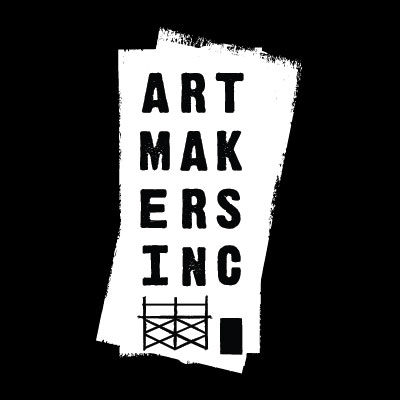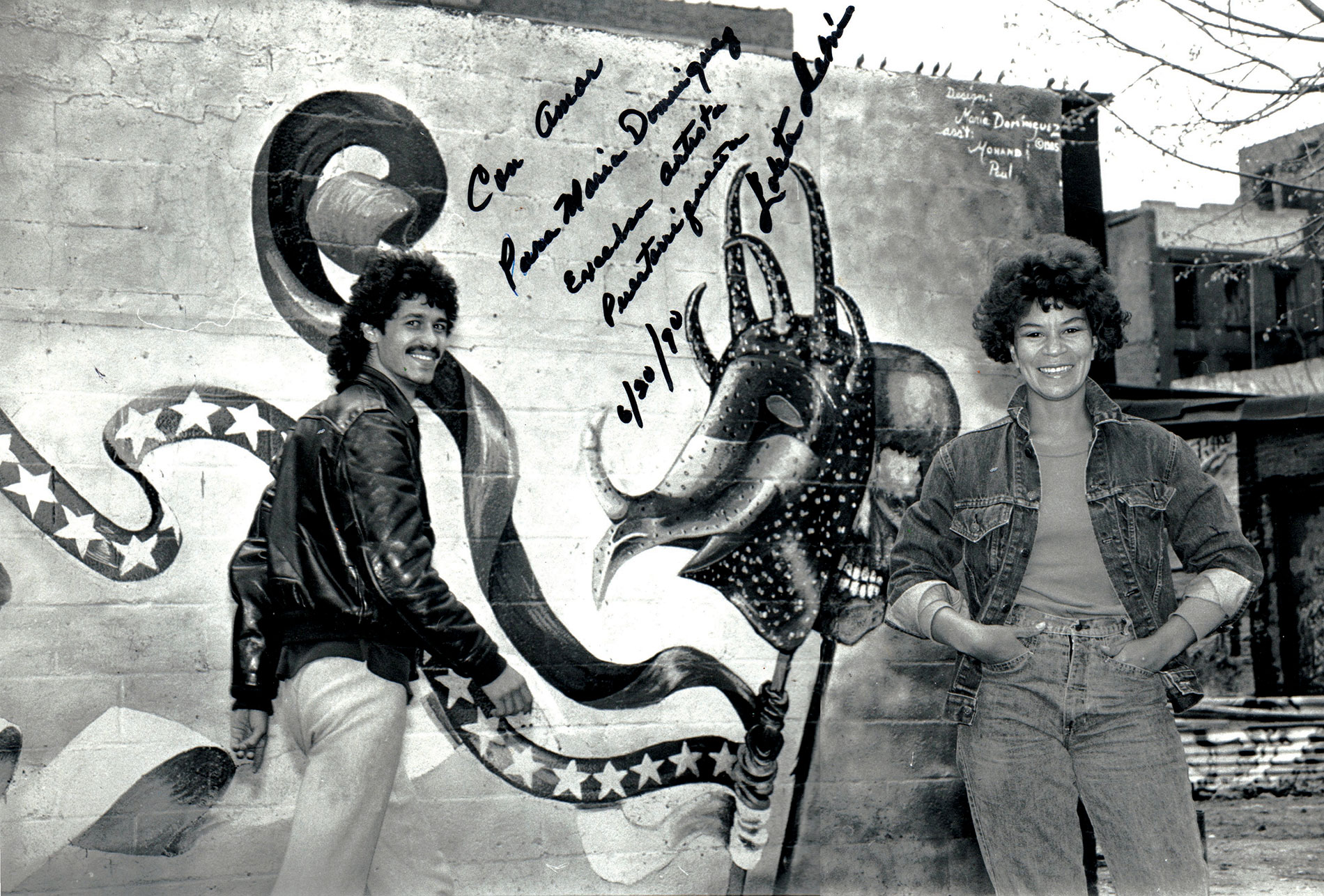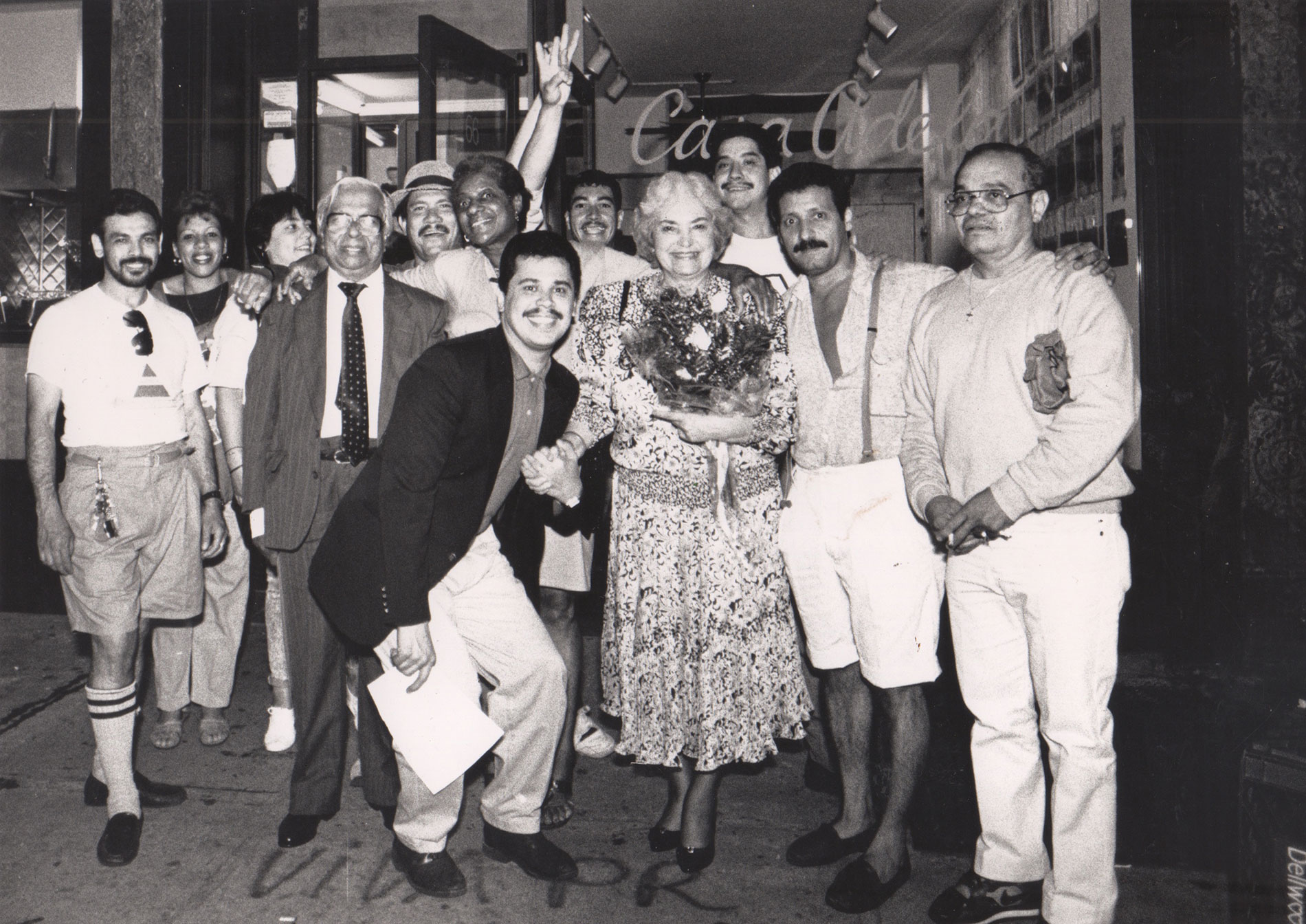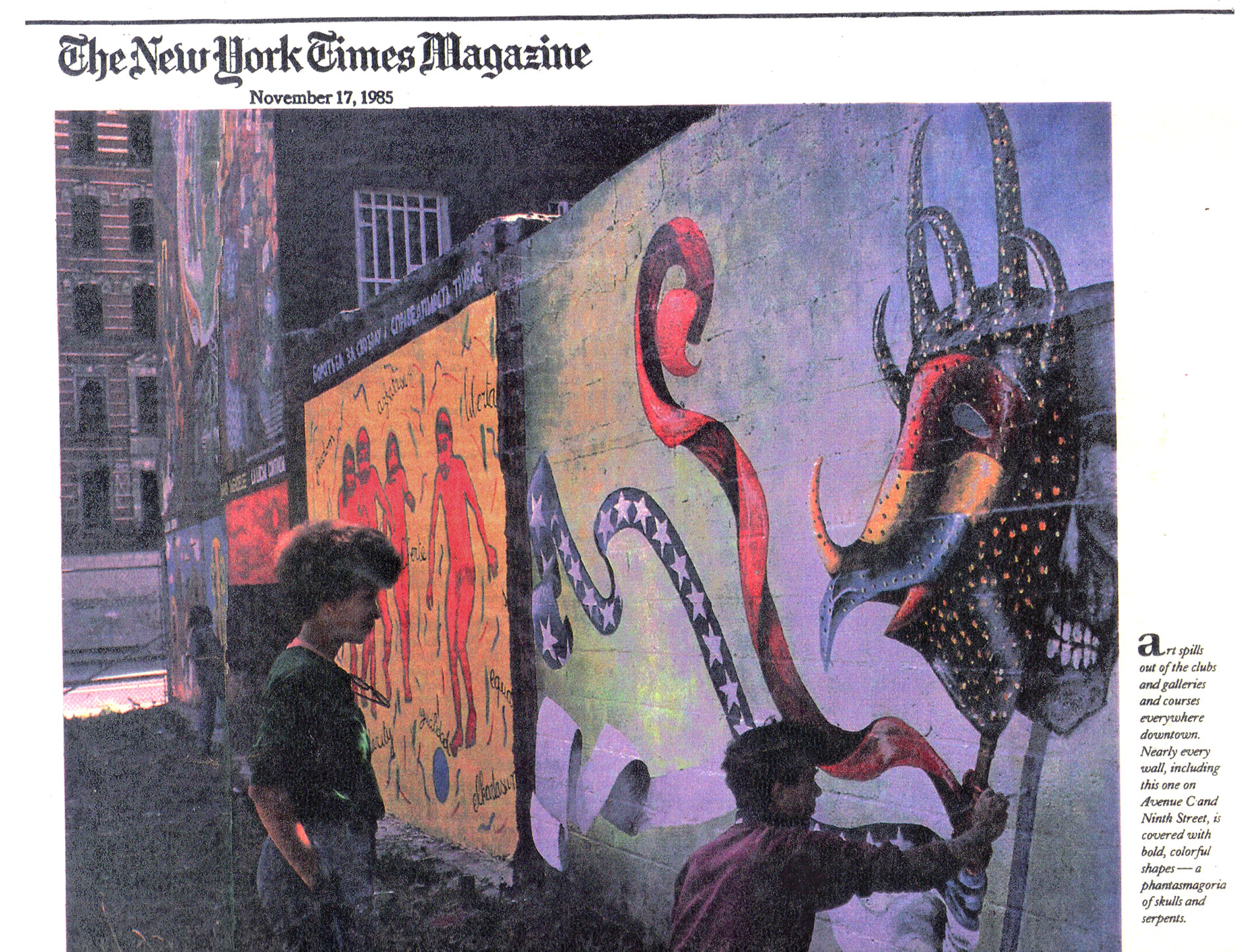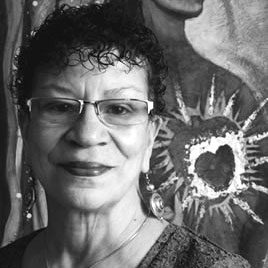6. Sueño
MARIA DOMINGUEZ
1985, 12’ x 15’8”
Photo © Camille Perrottet
At the time a Loisaida resident, Maria created a mural that “displayed the issues and injustices surrounding us and the world. I wanted to express my concern that Puerto Rican culture and arts were losing their true identity, being replaced by North American pop culture.”
The mural presents the papier maché mask traditionally worn by vejigantes during carnival in Ponce, on Puerto Rico’s southern coast. A vejigante is a folkloric figure whose origins trace back to medieval Spain. Usually dressed in black, red, white, and yellow—the vejigante represents the infidel Moors who were defeated in a battle led by Saint James, and to honor the saint, people dressed as demons. The word “vejigante” is an amalgam of the Spanish vejiga or cow bladder and gigante or giant. The vejigantes carry bladders that have been dried, inflated, filled with seeds, and painted. Wielding the vejiga as “a trusty weapon, the vejigante happily walks among the people—chanting, singing, and whacking random passersby. The banter between the vejigantes and revelers is all part of the fun.”
In Sueño, a skull representing the stifling of Puerto Rican culture lurks behind the vejigante mask, itself strangled by red, white and star-spangled blue banners, symbolizing mainland culture. “My hours were irregular,” recalls Maria, “and I was lucky if a volunteer dropped by to lend a hand. Ahmed was a young, newly arrived French Muslim artist; he loved drawing skulls and insisted on painting the one in the mural. A photograph of us is in Maureen Dowd’s New York Times Magazine article “A Different Bohemia” about downtown’s ascendant art scene.”
In 1985, the Puerto Rican nationalist Maria Lebrón (1919- 2010) visited New York City. In 1954, she led an assault on the U.S. House of Representatives, wounding five members of Congress. Convicted of attempted murder, she was freed from prison in 1979, having been granted clemency by President Jimmy Carter. On her way to dinner at Casa Adela on Avenue C, Lebrón visited La Plaza and later signed the photograph of Maria, and an unknown community member, standing in front of the mural.
In 1989, Latin musician Eddie Palmieri issued the album Sueño. His producer, scouring Loisaida for a mural for its cover, selected Maria’s. After the album’s release, she gave its name to her untitled mural.
Eddie Palmieri record cover
Courtesy of Maria Dominguez
A co-founder of Artmakers, Maria is a dedicated arts educator who continues to paint murals—in schools and in the community. She frequently exhibits her studio work locally, nationally and internationally, and has designed a subway glass installation for the MTA Arts For Transit program. mariadominguez.com
